I ski around 40 days per season, split up into four separate trips to resorts in Canada, Utah, Colorado, California and Wyoming. Having skied every winter since 1973 in Europe and North America, that makes me a bit of an expert – although somehow I still seem to get airport injuries lugging the carry-ons around. Note to airports: carpets are not conducive to wheeled bags!
For those of you on your first ski trip, or returning to skiing after an absence, here are my tips on what to pack on a ski holiday and what to include for both practical and posing purposes.
Essential skiwear
If you have your own ski boots, bring them! Rentals can be uncomfortable. Mine are so precious that I pack them in my carry-on rather than risk losing them during connections.
The, albeit bulky, boots actually make a handy protective place to stash anything delicate inside – jewelry in particular but even a bottle of wine once or twice!
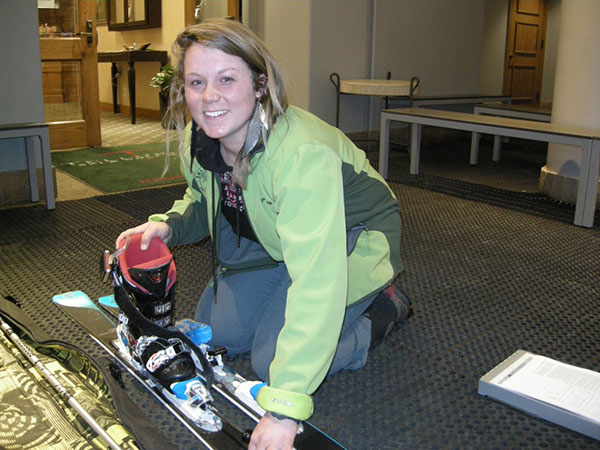
It’s easy to manage without your own skis as rentals are so convenient these days. Many hotels have an integral rental shop. Or you can book Ski Butlers to bring them direct to your room or condo.
But, if you can’t bear to ski on anything but your own, stuff the ski bag (preferably one on wheels like Transpack’s) with ski pants, underlayers, ski socks, helmet, goggles (in some kind of wrapping to protect the lenses), down or heated vest, underwear etc.
Your ski bag and boot bag – up to a combined weight of 50 lbs – count as your suitcase luggage allowance. The boot bag is also a convenient place to stash toiletries and other skiing accessories.
If you don’t take skis, you can take a suitcase (containing up to 50 lbs) so put your ski boots, helmet and all skiwear in here as well as your après ski wardrobe, saving can’t-live-without items for your hand luggage.
Buying a new ski jacket this year?
You might be tempted to go neutral so you can double it up for city wear. This has been the timid trend for the past few years with the beige and black brigade taking over resorts in Europe and North America.
But, just recently, the tide has turned with new brands like Alchemy of Ride and Obermeyer emerging with the brightest colors and amazing prints.
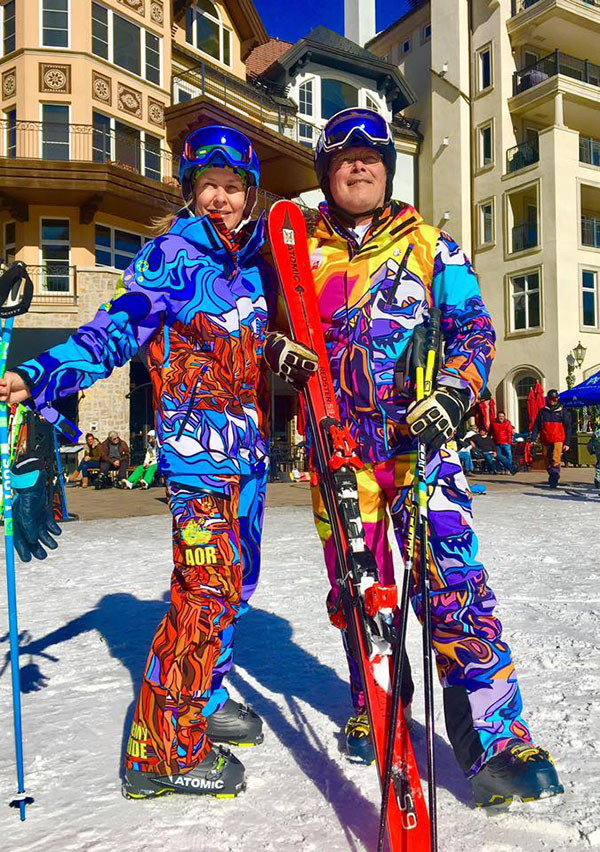
This is the season to branch out and go bold rather than bland. If all-over technicolor is too much for you, pair with plain pants such as these.
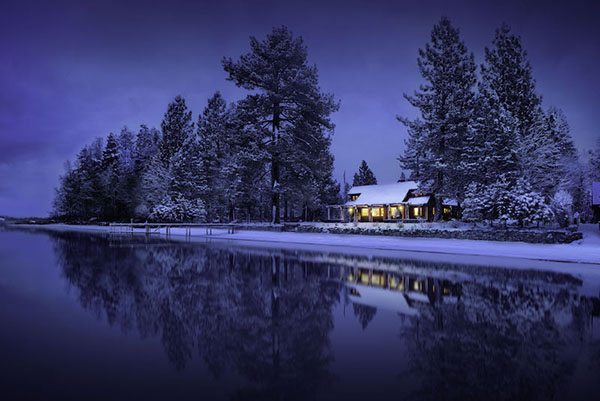
Checklist: Ski jacket, ski pants, wickable merino wool base layer and leggings like Kari Traa’s, ski top or sweater (eg Smartwool’s Isto), down or heated vest (check out Volt), neck warmer and/or face mask, helmet (plus helmet hugger for extra glamour), thin hat to go under helmet for extra warmth/comfort, helmet-compatible goggles and sunglasses, ski gloves or mitts (Heat Touch by Seirus are battery-heated), and merino ski socks (Smartwool or for a lighter weight, Bridgedale). Don’t forget to pack the chargers for anything heated!
Advantageous aprés skiwear
The quantity depends, of course, on how many days you are taking for your trip and how much you can roll and stuff into your luggage allowance.
I typically go for a week, sometimes longer – but if I go for several weeks, I just pack one week’s items and make sure there is somewhere to do laundry at the resort. My general rule is to choose a coordinating color scheme and take one après ski top per day – you can wear each one at night and then re-use it if you need a day-time outfit afterwards.
So, less sleeveless and sequined choices and more long-sleeved day/night tops and glitzy sweaters! You do have to bear in mind, though, that ski lodges and hotels can be very over-heated, so some lighter layers are advisable.
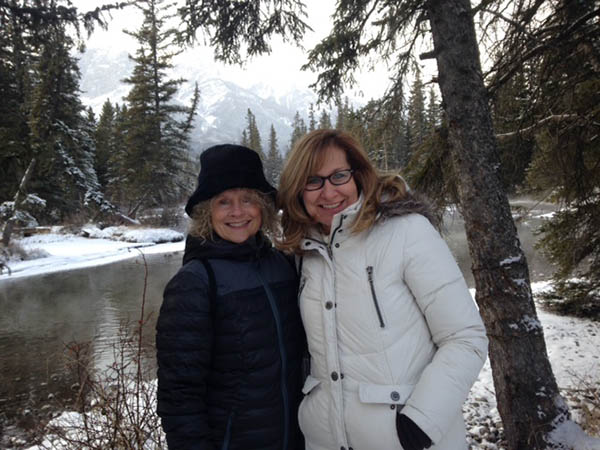
For a week’s trip, I pack four pairs of pants – typically all black in different textures so that they can coordinate with my black après ski boots.
If it is deep winter, then I cannot go without my fur-trimmed, wool-lined Bos & Co’s (for shopping in Banff or going on a sleigh ride at Steamboat) which I wear to the airport to save luggage allowance.
But I also have to take a second pair: still winter-weight, chunky non-slip heel, fur-lined and trimmed, but an ankle boot, more suitable for fancy dining. With ice and snow underfoot and cold temps to contend with, footwear is key!
Choosing tops and sweaters is where you can have a little fun. Ski resort wear has always tended towards glamour, faux fur, bright colors, cozy textures. With basic black on the legs and feet, I typically pick my most exotic tops and anything fur-trimmed. And scarves are an easy way to jolly the look up.
Sporting the same ski jacket all every day, you may be bored with wearing it by night – this is when a handy packable down jacket can work well. I bring a pewter grey one, which stuffs into a tiny bag, in my hand luggage and use it on the plane as a back or neck support.
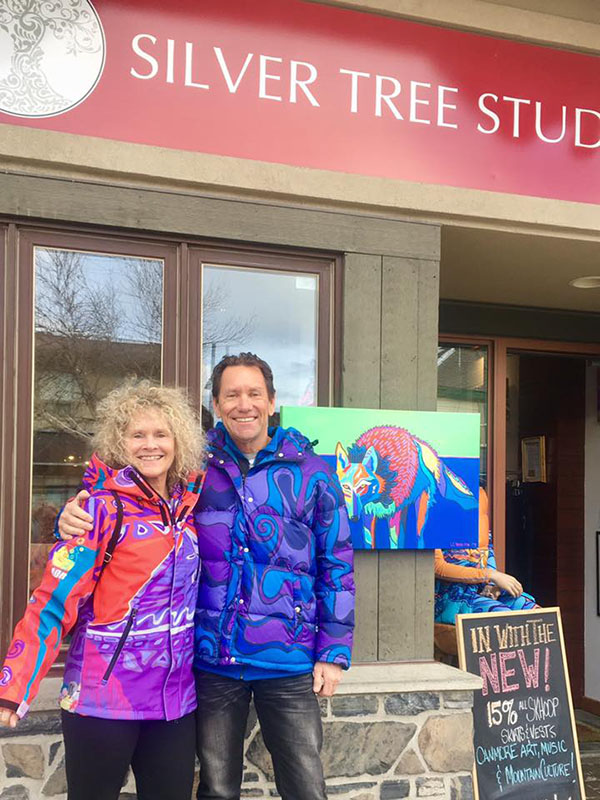
Ski hats are great, they’re cozy, look cute and you can wear them indoors for après up to about 6pm. They don’t look so good at dinner unless you are 20 or on a snowshoe yurt trip such as the one at Solitude, Utah.
But the main problem with ski hats is that they ruin your hair. If your helmet has not already done that during skiing, then the hat will finish the job! Best way is to don the ski hat immediately after removing your helmet, wear it to the après ski bar, and then factor in time for showering before dinner dates.
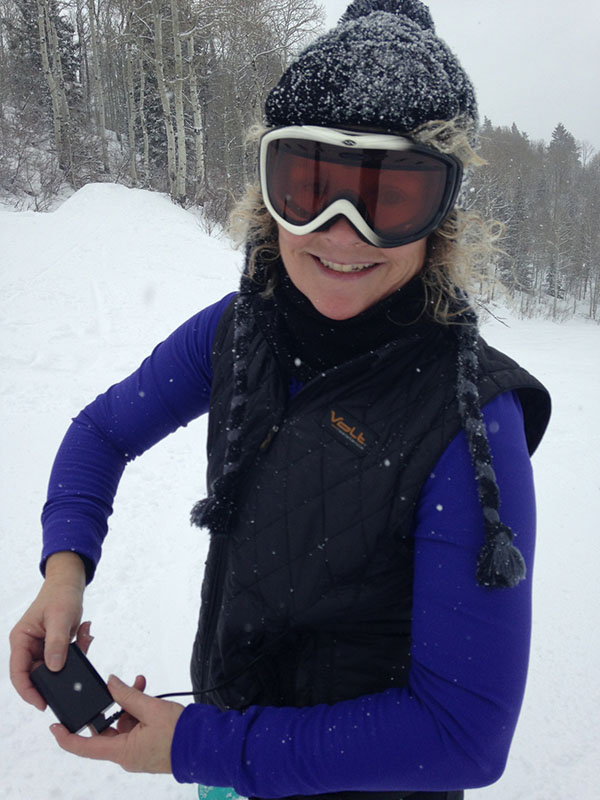
I have discovered a fur-fabric hat which keeps my head warm but doesn’t squash my hair so much. It is also cute in a kind of 1920s way, especially if you add a brooch, feather or decorative flower.
If I wear this outside I can take it off indoors, so long as I rush straight to the restroom to rescue my hair with some strategic fluffing and damage control. Another option is to make sure your ski jacket has a hood as these can keep you warm without too much hair-despair.
Purses are not really necessary in ski resorts – you can typically put everything you need in ski jacket pockets. But if you absolutely have to have one, then a small backpack style is best.
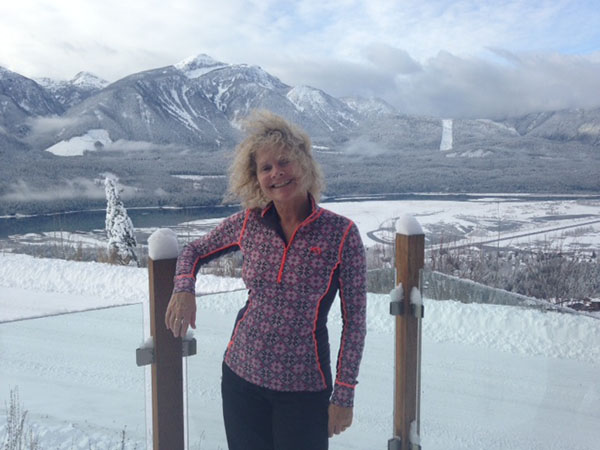
Jewelry is not a big factor in skiing – a bit of costume bling is great for the wow factor but precious items should be left at home due to the possibility of losing them skiing, in the snow, spa, rooftop hot tubs, etc.
Likewise, makeup. Just a few basics for the evening perhaps, as the daytime focus is on outdoors sport where you really just need sunscreen and lip protection.
The other problem with makeup is actually having time to do it with early starts for ski school or first tracks on a powder day. And then after skiing, there is so much to do in terms of bars, skating or snowshoeing, hot tubs, spa, shopping and then dinner.
You’re not going to want to wear your ski gloves or mitts during the evening so make sure to add a pair of very warm city mitts (mitts are warmer than gloves). Mine are just wool but with thermal fleecy lining and, if it is very cold on a clear, star-spangled night, then I add in a pair of battery-heated pocket packs.
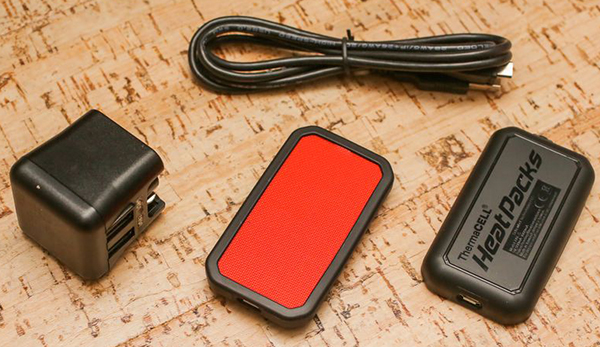
Lastly, swimsuit for hotel hot tubs, heated pools and the spa. And if you’re wary about walking around barefoot, a pair of lightweight flipflops. I sometimes also take a sarong in case the hotel doesn’t have robes in the rooms.
Checklist: Non-slip warm après ski boots, chunky-heeled ankle boots, four pairs of pants, seven tops, underwear, cozy socks, warm mitts, packable down, scarves, hat, small backpack instead of a purse, swimsuit, flipflops.
Other top tips include rolling your clothing tightly before packing into your carry on – this gets rid of air, compresses the items tightly, reduce creasing – and, more importantly, enables you to fit in more.
I always pack a few days in advance, in a carry-on with a hard shell (so it doesn’t get too puffy for the overhead bin) and close the lid – when I re-open the day before leaving, there is usually a bit more room to add a few last-minute additions.
Now you know why I injure myself at airports! In North America no-one seems to weigh carry-on luggage, so you can afford to pack as much as you can squeeze in.
However, if you are going to Europe, they are not so obliging, so make sure you stick to the exact luggage allowance. Another useful item is a small clothes brush, to remove lint and fur from black pants. Also, a strap for your phone – so many people drop them from chairlifts while trying to get a good photo.
And, finally, I often bring a lightweight outlet bar to make sure I have enough sockets to plug in all my heat chargers!
Image of Lake Tahoe from Clear Creek Tahoe
You may also like to read Louise’s earlier article on How to look and feel fabulous over 50.

Author Bio: Louise Hudson is a freelance travel and ski journalist. Since 2005 her ski articles have been published prolifically across the USA, Canada and England. She is also an author and blogger: One, Two, Ski!
Like this article? Save it on Pinterest!
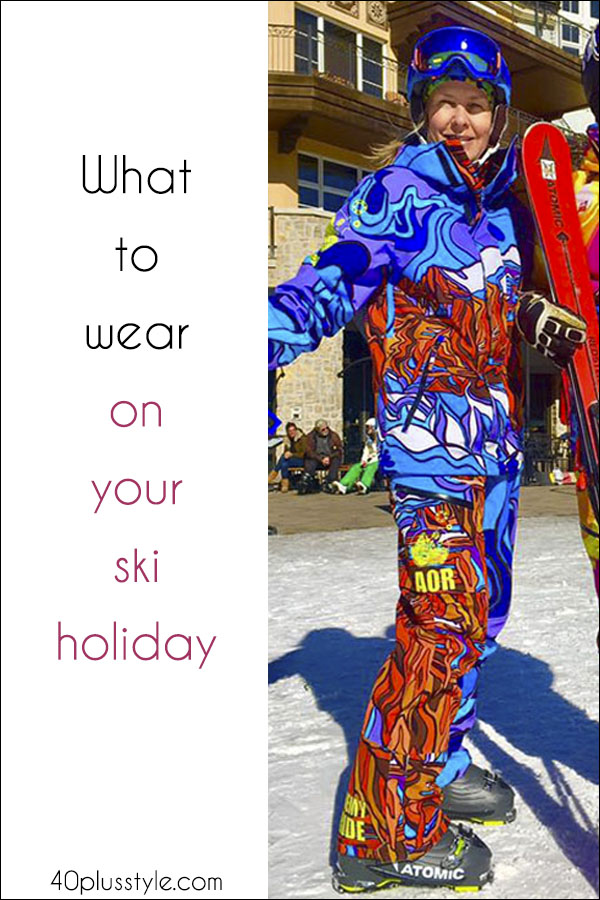
Want to get more articles from 40+style in your inbox, subscribe here.
You can also connect with 40+style on Facebook, Instagram or Pinterest.
Support 40+style by using the links in our articles to shop. As an associate for Amazon and many other brands, we receive a small commission (at no cost to you) on qualifying purchases which enables us to keep creating amazing free content for you. Thanks!
